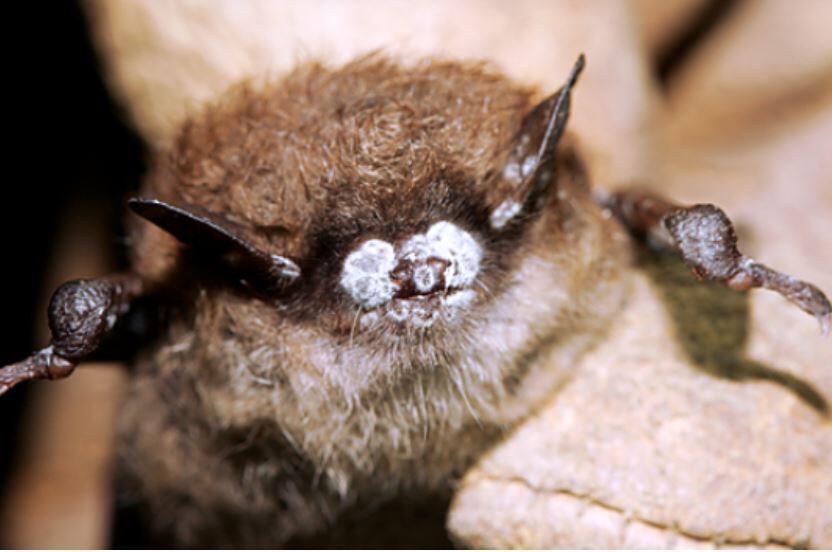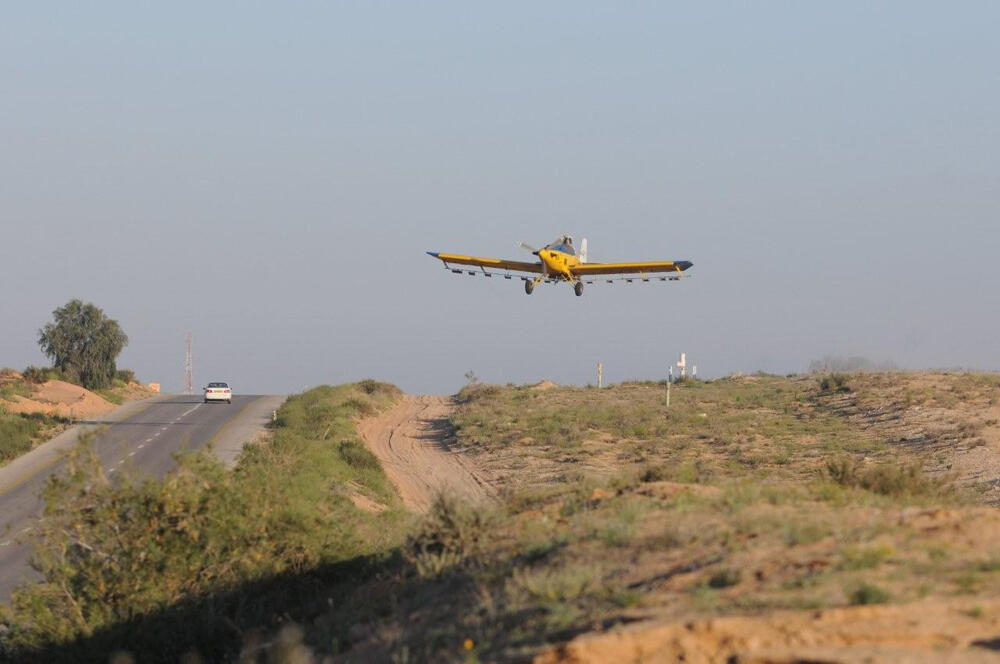What is the connection between bat populations and infant mortality? At first glance, there appears to be none. However, a study involving analysis of a large amount of government data, conducted by an Israeli-American environmental economist, suggests a possible and concerning link between a disease devastating wild bat populations and a rise in infant mortality in the United States, demonstrating yet again how disruptions in the environmental web can lead to profound and unexpected consequences.
3 View gallery


A brown bat infected with White-Nose Syndrome
(Photo: US Fisheries and Wildlife Service / Ryan von Linden)
A Deadly Fungus
In 2006, a disease known as "White-Nose Syndrome" began spreading in New York State, USA. Named for the white lesions that appear on the noses and wing membranes of infected bats, the disease is caused by the fungus Pseudogymnoascus destructans. This fungus attacks the epidermal cells on the nose, leading to breathing difficulties, hindering the bats' ability to survive hibernation, and often ultimately resulting in death. The fungus also creates holes in the wing membranes, which can impair the bat's ability to fly and gather food, further reducing its chances of survival.
The fungus likely arrived in North America through humans from Europe, where it is widespread among bats but does not cause disease due to the bats' long evolutionary adaptation to it. In North America, however, it is spreading rapidly and has wreaked havoc on bat populations. Within just a decade, it has spread across half of the United States and into large parts of Canada, killing millions of bats. Experts are concerned about the potential local extinction of several species.
A Costly Fungus
White-Nose Syndrome does not spread to humans and poses no direct risk to them. However, it impacts human well-being in other ways. Most bat species feed on insects, playing a crucial role in the biological control of agricultural pests. This role is so significant that its economic value in the United States is estimated at $3–4 billion annually. This value stems not only from reducing crop damage but also from indirect benefits, such as minimizing the need for insecticides and, consequently, reducing environmental harm.
Accurately assessing the economic importance of bats is challenging due to the many variables involved in agricultural systems, where numerous factors can influence farmers' decisions about whether and how much to spray their fields. Eyal Frank, Ph.D. in Environmental Economics at the University of Chicago's School of Public Policy, first learned about the bat epidemic in 2014 while still a Ph.D. student in Economics and Environment at Columbia University.
"I was already aware of the ecological importance of bats and had heard grim predictions about what might happen to ecosystems without them. I realized that this was a natural experiment we could not conduct ourselves, but the bat disease, which severely and rapidly affects entire populations, could serve as a good approximation of a controlled experiment," he told the Davidson Institute website. Over the years, Frank analyzed data from 1,185 counties in the United States, 245 of which were affected by White-Nose Syndrome, where the disease spread and killed large numbers of bats. The remaining counties served as a control group.
In an article in Science, Frank reports that in the first year after the bat populations were affected, in the absence of natural pest control, farmers used an average of one kilogram more insecticides per square kilometer of agricultural land in the absence of natural pest control, compared to counties where bats were not affected. Five years after the onset of the bat population's infection with the disease, this difference in pesticide usage increased to two kilograms per square kilometer, leading to an overall average increase of 31% in pesticide use. Frank estimates that the direct economic damage to farmers from White-Nose Syndrome amounted to around $27 billion between 2006 and 2017, primarily due to increased pesticide costs.
Correlation and Causality
In addition to pesticide use, Frank examined infant mortality data. In counties where bat populations were severely affected, there was no change in infant mortality due to accidents or violence. However, there was an average increase of nearly eight percent in deaths from diseases or congenital anomalies compared to counties where bat populations were not impacted by the epidemic. According to his calculations, this resulted in an excess of 1,334 infant deaths in the counties affected by the epidemic in 2017.
Frank's data are based on correlation, and the study does not establish causality - it does not provide a biological mechanism that explains how pesticide use might increase infant mortality. In the absence of demonstrated causality, it is possible that another factor could be responsible for some or all of the increase in mortality. For instance, the absence of bats might lead to an increase in diseases transmitted by insects or the proliferation of pollinating insects could contribute to higher allergen levels in the air. Nevertheless, there are compelling reasons to suspect that increased exposure to pesticides harms health and poses risks to pregnancies and infants.
This suspicion is supported by other correlational studies that have observed increased infant mortality in the United States and Brazil in regions or periods of increased pesticide use. Some studies, which arrived at less definitive conclusions, still point to an increased risk of congenital anomalies with high pesticide exposure. However, Frank's study did not find correlations between bat population declines and other infant health indicators, such as birth weight.
According to Frank, the extensive data he collected strongly suggests a causal connection. "At least from an economist's perspective, the combination of the relatively sudden appearance of the fungus, the lack of a difference in infant mortality before its appearance, the absence of an upward trend in such mortality, and the rise in mortality rates after the epidemic's spread in a particular county certainly allows for an interpretation of causation," he emphasizes."When the data are analyzed on a biannual basis rather than annually, as I present in the supplementary materials for the article, the statistical significance is even higher."
The Vox website, which covered the study, agrees with the general interpretation, stating that, "While the research doesn’t definitively prove that bat declines cause insecticide use and infant mortality to increase, the study ruled out many other potential forces behind this trend. Frank also found that when bat declines were more severe — when more bats died, more caves were infected, or the decline was steeper — the rate of infant mortality was higher."
Even if increased pesticide use does not explain the rise in infant mortality or only accounts for part of it, there is substantial evidence indicating that pesticide use should be reduced due to its harmful effects in honeybees and other beneficial insects, its contamination of soil and water, and its role in the development of pesticide-resistant insect populations.
The study provides "the most convincing evidence to date" linking the economic and health impacts with a dramatic decline in wildlife populations, said Paul Ferraro, a sustainability researcher at Johns Hopkins University who was not involved in the study. It's a “pretty dramatic claim that’s going to get a lot of attention," he added. However, other confounding factors complicate the picture and might have contributed to the increase in mortality. "I wouldn't change public policy based on this one study," added Ferrano.
From Frank's perspective, the study underscores the economic and ecological importance of biological pest control through bats. "Bat populations have experienced significant mortality events, often nearing 100 percent, effectively turning off the switch on biological pest control. When we lose this, we are forced to rely on synthetic pesticides, which comes with a worrying cost," he concludes. "Overall, the study teaches us about the importance of interspecies interactions in maintaining ecosystem stability. When that stability is disrupted, there are consequences for humans too."



